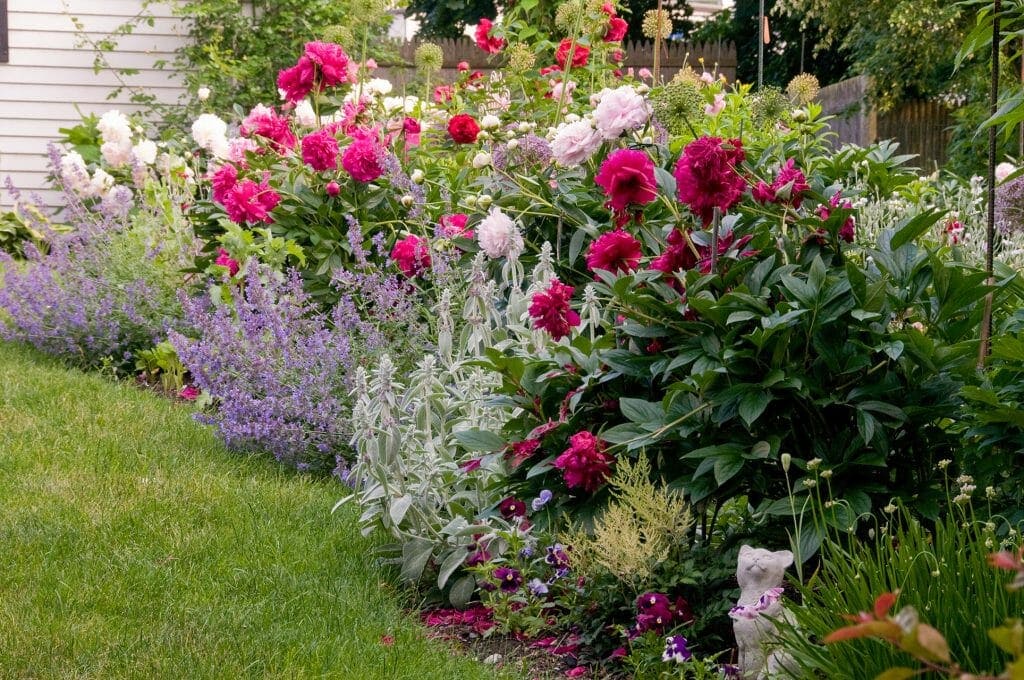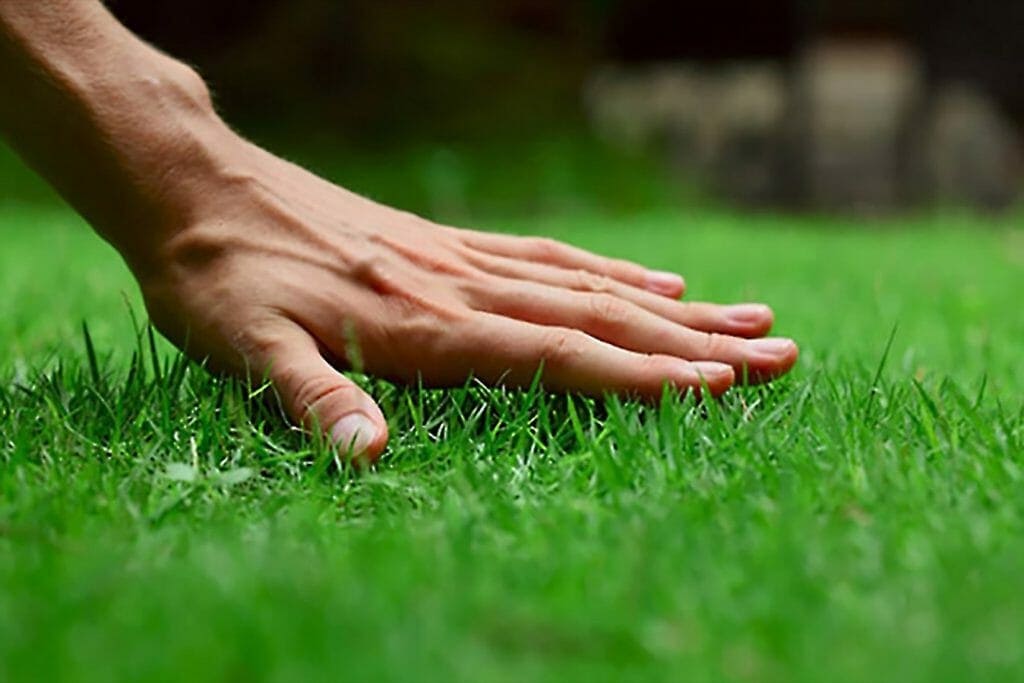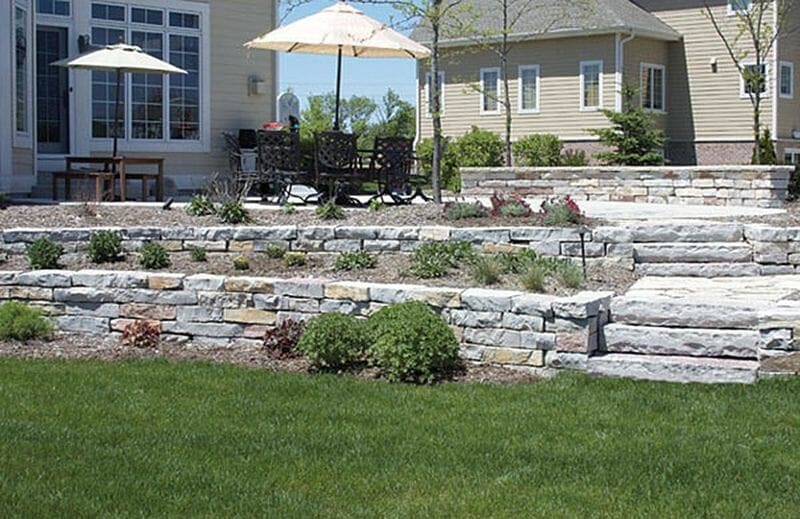Written by Jamie McIntosh and published on https://www.thespruce.com/.
If high-maintenance flowers have no place, or chance of survival, in your backyard, then here’s some great news: You don’t need to plant a ton of flowers to add color to your landscape. These vibrant plants and shrubs are not only vibrant and colorful, but also surprisingly easy to care for. Ready to boost the style in your outdoor space? Consider planting one of the varieties below.
The 17 Most Colorful Garden Plants
When it comes to vibrant color, not all plants are created equal. Flowers that looked great in the garden center can bleach out in the full sun of your flowerbed. One red or purple flower isn’t the same as the next: In the case of some flowers, iridescence on the petals increases the richness of their hue and gives the appearance of a color shift in the light, which can signal to pollinators that a nectar feast is in store. Don’t forget foliage, as it adds to the color parade in the landscape.
How will you create your perfect garden design with colorful garden plants? Transform your landscape with a stunning ROYGBIV or ombré-themed bed. Take advantage of contrast with opposites on the color wheel, like orange and blue or acid green and purple. Or, stick with a monochrome favorite and pack in all of your favorites in an all-yellow or red garden.
- 01 of 17 Bearded Iris
:max_bytes(150000):strip_icc():format(webp)/GettyImages-156830428-50bef699ed134a9ea69c62843c5d0535.jpg) Josie Elias/Getty Images The bearded iris (Iris germanica) is a go-to for color lovers, as each part of the flower’s anatomy contributes something different to the bloom’s appearance, resulting in a harmonious result that looks like Mother Nature went to the paint store and brought home a color swatch palette. Take, for example, the cultivar ‘In Town,’ with lavender standards, purple falls, and a tangerine beard. Outstanding! Grow bearded iris in full sun and well-drained soil.
Josie Elias/Getty Images The bearded iris (Iris germanica) is a go-to for color lovers, as each part of the flower’s anatomy contributes something different to the bloom’s appearance, resulting in a harmonious result that looks like Mother Nature went to the paint store and brought home a color swatch palette. Take, for example, the cultivar ‘In Town,’ with lavender standards, purple falls, and a tangerine beard. Outstanding! Grow bearded iris in full sun and well-drained soil. - 02 of 17 Blanket Flower
:max_bytes(150000):strip_icc():format(webp)/GettyImages-135574626-20c0920ae1f84ab0abfaa1517f1760ac.jpg) David Q. Cavagnaro/Getty Images Blanket flower cultivars (Gallardia grandiflora) vary in height and form, but all flowers feature some brilliant combination of yellow, orange, and red on daisy-like flowers from June to September. The sun-loving perennials attract butterflies, and they tolerate rabbit nibbling and dry soil conditions.
David Q. Cavagnaro/Getty Images Blanket flower cultivars (Gallardia grandiflora) vary in height and form, but all flowers feature some brilliant combination of yellow, orange, and red on daisy-like flowers from June to September. The sun-loving perennials attract butterflies, and they tolerate rabbit nibbling and dry soil conditions. - 03 of 17 Zinnia
:max_bytes(150000):strip_icc():format(webp)/GettyImages-902501520-fc1dd44bb0c44118aad3c81ce0744c66.jpg) Chuanchai Pundej/Getty Images Our grandparents relied on zinnias for easy summer color, and that aspect of Zinnia elegans hasn’t changed. What has changed is the availability of new mildew-resistant cultivars like the ‘Profusion’ series. If you can’t resist the old-fashioned varieties, grow them at the back of the border where the blooms will shine but the mildewed foliage will remain hidden.
Chuanchai Pundej/Getty Images Our grandparents relied on zinnias for easy summer color, and that aspect of Zinnia elegans hasn’t changed. What has changed is the availability of new mildew-resistant cultivars like the ‘Profusion’ series. If you can’t resist the old-fashioned varieties, grow them at the back of the border where the blooms will shine but the mildewed foliage will remain hidden. - 04 of 17 Moss Rose
:max_bytes(150000):strip_icc():format(webp)/GettyImages-182953405-4096031dad4545f6ad6236e5ed6d2b4e.jpg) Maria Mosolova/Getty Images Portulaca grandiflora doesn’t ask for much in the garden besides as much sun as you can provide, for the blooms will close when shade, shadows, or dusk steals their light. Gardeners looking to liven up a harsh environment like curbside or sidewalk edge should choose moss rose, which can take the heat and drought that concrete and asphalt generate.
Maria Mosolova/Getty Images Portulaca grandiflora doesn’t ask for much in the garden besides as much sun as you can provide, for the blooms will close when shade, shadows, or dusk steals their light. Gardeners looking to liven up a harsh environment like curbside or sidewalk edge should choose moss rose, which can take the heat and drought that concrete and asphalt generate. - 05 of 17 Hibiscus
:max_bytes(150000):strip_icc():format(webp)/GettyImages-535299152-cb436ffa4ce84bf795d20a53e7ea4ce5.jpg) Douglas Peebles/Getty Images There are several hardy hibiscus varieties (Hibiscus rosa-sinensis) that add summer color to the sunny flower garden, but those who wish to take it up a notch know that tropical hibiscus delivers color like few others can. Flowers as big as a salad plate in neon pink, red, orange, and yellow send a shout-out to hummingbirds, and give your patio that staycation feel. Grow in full sun, and protect from temperatures below 50 degrees F.
Douglas Peebles/Getty Images There are several hardy hibiscus varieties (Hibiscus rosa-sinensis) that add summer color to the sunny flower garden, but those who wish to take it up a notch know that tropical hibiscus delivers color like few others can. Flowers as big as a salad plate in neon pink, red, orange, and yellow send a shout-out to hummingbirds, and give your patio that staycation feel. Grow in full sun, and protect from temperatures below 50 degrees F. - 06 of 17 Persian Buttercup
:max_bytes(150000):strip_icc():format(webp)/GettyImages-678820905-c0b3aa74fc8c4987989ac722e3ef0826.jpg) Mint Images/Getty Images Brides may prefer the understated white and pastel pink varieties of Ranunculus asiaticus, but give the rest of us the glowing red, orange, and yellow types, which rival English roses in petal count. The spring bloomers are hardy to zone 8, but also make stunning container plants to usher in the growing season. Keep in full sun, and provide regular moisture and very good drainage.
Mint Images/Getty Images Brides may prefer the understated white and pastel pink varieties of Ranunculus asiaticus, but give the rest of us the glowing red, orange, and yellow types, which rival English roses in petal count. The spring bloomers are hardy to zone 8, but also make stunning container plants to usher in the growing season. Keep in full sun, and provide regular moisture and very good drainage. - 07 of 17 Strawflower
:max_bytes(150000):strip_icc():format(webp)/GettyImages-1074845384-140537c0b7e44056a39846e1e1aa5b7e.jpg) samart Boonprasongthan/Getty Images The papery flowers of Xerochrysum bracteatum have fooled more than one person who thought the red, orange, yellow, and pink blooms were fake. Also known as paper daisy, the petals are actually bracts, and last long both as cut flowers for the vase, and as dried specimens for arrangements or potpourri. Grow strawflower in full sun and average soil.
samart Boonprasongthan/Getty Images The papery flowers of Xerochrysum bracteatum have fooled more than one person who thought the red, orange, yellow, and pink blooms were fake. Also known as paper daisy, the petals are actually bracts, and last long both as cut flowers for the vase, and as dried specimens for arrangements or potpourri. Grow strawflower in full sun and average soil. - 08 of 17 Coleus
:max_bytes(150000):strip_icc():format(webp)/GettyImages-1050104484-f0f34945425a4d91add26af56db86ce7.jpg) Nancybelle Gonzaga Villarroya/Getty Images There has been an explosion in the number of coleus cultivars (Plectranthus scutellarioides) available in the past several years, and with each new variety, the kaleidoscope of colors seems to grow more outrageous. Best of all, many of these varieties, like the cheerful bright apricot toned ‘Wizard Sunset,’ are available from seed, so you can fill your garden with these annuals that thrive in both sun and shade, as long as you keep them moist.
Nancybelle Gonzaga Villarroya/Getty Images There has been an explosion in the number of coleus cultivars (Plectranthus scutellarioides) available in the past several years, and with each new variety, the kaleidoscope of colors seems to grow more outrageous. Best of all, many of these varieties, like the cheerful bright apricot toned ‘Wizard Sunset,’ are available from seed, so you can fill your garden with these annuals that thrive in both sun and shade, as long as you keep them moist. - 09 of 17 Tulip
:max_bytes(150000):strip_icc():format(webp)/GettyImages-977501660-b4670ea9635b47fca529263606d38778.jpg) Shubhashri KB/Getty Images Tulips (Tulipa spp.) are a harbinger of spring for gardeners in zones 3-7, and for those living in warmer climates, they can be forced in the refrigerator. Tulips are inexpensive, and look impressive in groups of 25 or more. Be sure to plant them at least six inches beneath the soil’s surface to increase the chances of them coming back the following year.
Shubhashri KB/Getty Images Tulips (Tulipa spp.) are a harbinger of spring for gardeners in zones 3-7, and for those living in warmer climates, they can be forced in the refrigerator. Tulips are inexpensive, and look impressive in groups of 25 or more. Be sure to plant them at least six inches beneath the soil’s surface to increase the chances of them coming back the following year. - 10 of 17 Oriental Poppy
:max_bytes(150000):strip_icc():format(webp)/GettyImages-1084705642-ce6e3788358c4476b7fe7062c0a1512e.jpg) Sheryl Watson/Getty Images There is something magical about a flower that can pack so much pigment into such tissue-thin petals. Oriental poppies (Papaver orientale) take that magic a step further with a wide range of colors, like rich plummy purples and juicy reds. Poppies have a long tap root that makes them endure, but also makes them resent transplanting, so give them a site in full sun with good drainage.
Sheryl Watson/Getty Images There is something magical about a flower that can pack so much pigment into such tissue-thin petals. Oriental poppies (Papaver orientale) take that magic a step further with a wide range of colors, like rich plummy purples and juicy reds. Poppies have a long tap root that makes them endure, but also makes them resent transplanting, so give them a site in full sun with good drainage. - 11 of 17 Coral Bells
:max_bytes(150000):strip_icc():format(webp)/GettyImages-200492342-001-10aec924a92d429987a83250e74a010c.jpg) Darrell Gulin/Getty Images No shade garden should be without one of the fine selections from the Heuchera genus. Gardeners can choose from orange, silver, purple, and lime leaves with interesting veining and ruffles on many cultivars. Water regularly and give an occasional topping of compost for large, healthy plants.
Darrell Gulin/Getty Images No shade garden should be without one of the fine selections from the Heuchera genus. Gardeners can choose from orange, silver, purple, and lime leaves with interesting veining and ruffles on many cultivars. Water regularly and give an occasional topping of compost for large, healthy plants. - 12 of 17 Lantana
:max_bytes(150000):strip_icc():format(webp)/GettyImages-135599271-3e1583e937054c8790594d6d0de0cb6a.jpg) Gerry Whitmont/Getty Images If you could ask a pollinator what kind of flower to add to the garden next, lantana (Lantana camara) would be on the short list. Pretty little flower clusters feature yellow, pink, orange, and red, sometimes on the same plant. Lantana plants are easy to grow, to a fault in some areas, where they can become invasive. Look for cultivars like ‘New Gold’ that don’t form berries to prevent their unwanted spread.
Gerry Whitmont/Getty Images If you could ask a pollinator what kind of flower to add to the garden next, lantana (Lantana camara) would be on the short list. Pretty little flower clusters feature yellow, pink, orange, and red, sometimes on the same plant. Lantana plants are easy to grow, to a fault in some areas, where they can become invasive. Look for cultivars like ‘New Gold’ that don’t form berries to prevent their unwanted spread. - 13 of 17 Daylily
:max_bytes(150000):strip_icc():format(webp)/GettyImages-98192692-c26b085bb89f4b59bf1da9859a6d1071.jpg) Roger Smith/Getty Images As evidenced by their presence along roadsides, the daylily is as tough as nails. Happily, the many cultivars on the market, like the ‘Chicago Royal Robe’ pictured, are no more difficult to grow than the naturalized yellow and orange types growing wild in fields and farmsteads. Full sun, good soil, and weekly watering will keep daylily plants healthy.
Roger Smith/Getty Images As evidenced by their presence along roadsides, the daylily is as tough as nails. Happily, the many cultivars on the market, like the ‘Chicago Royal Robe’ pictured, are no more difficult to grow than the naturalized yellow and orange types growing wild in fields and farmsteads. Full sun, good soil, and weekly watering will keep daylily plants healthy. - 14 of 17 Rose
:max_bytes(150000):strip_icc():format(webp)/GettyImages-969937960-da570f01309e4e3bbff25551eb8b6cad.jpg) Keith Getter/Getty Images Aside from the not-yet-fulfilled promise of a true blue rose, roses (Rosa spp.) come in every color to suit the garden palette. Hybrid tea roses deliver flowers with that perfect form for cutting, but don’t overlook today’s easy landscaping shrub roses, which are just as vibrant. Try the Oso Happy series, which need to pruning or deadheading.
Keith Getter/Getty Images Aside from the not-yet-fulfilled promise of a true blue rose, roses (Rosa spp.) come in every color to suit the garden palette. Hybrid tea roses deliver flowers with that perfect form for cutting, but don’t overlook today’s easy landscaping shrub roses, which are just as vibrant. Try the Oso Happy series, which need to pruning or deadheading. - 15 of 17 Fuchsia
:max_bytes(150000):strip_icc():format(webp)/GettyImages-678887751-de8185ae33fc448b9fb083e978d556cb.jpg) Darius Harrison/Getty Images Every spring, garden centers wow shoppers with lush hanging baskets overflowing with Fuchsia spp. plants. It’s difficult to resist the bright pink, purple, and red flowers of this genus, but many of these plants are destined for the compost bin after a couple of months. Keep your fuchsias blooming with a partially shady location sheltered from wind, and provide plants with rich soil and regular irrigation.
Darius Harrison/Getty Images Every spring, garden centers wow shoppers with lush hanging baskets overflowing with Fuchsia spp. plants. It’s difficult to resist the bright pink, purple, and red flowers of this genus, but many of these plants are destined for the compost bin after a couple of months. Keep your fuchsias blooming with a partially shady location sheltered from wind, and provide plants with rich soil and regular irrigation. - 16 of 17 Coneflower
:max_bytes(150000):strip_icc():format(webp)/GettyImages-1133874816-149771702c8543299f20f11a6d5328c0.jpg) Christina Gray/Getty Images Gone are the days of the washed-out mauve Echinacea plants that attracted butterflies but not many compliments. A new focus on breeding has given us coneflowers in bright yellow, red, coral, and magenta that wow people and pollinators. Although coneflowers will tolerate drought, the new varieties fare better in rich, loamy soil with regular irrigation. Continue to 17 of 17 below.
Christina Gray/Getty Images Gone are the days of the washed-out mauve Echinacea plants that attracted butterflies but not many compliments. A new focus on breeding has given us coneflowers in bright yellow, red, coral, and magenta that wow people and pollinators. Although coneflowers will tolerate drought, the new varieties fare better in rich, loamy soil with regular irrigation. Continue to 17 of 17 below. - 17 of 17 Dahlia
:max_bytes(150000):strip_icc():format(webp)/GettyImages-512882246-20acd74e842743c6bd2dc5eb99a7494b.jpg) LianeM/Getty Images Dahlias, one of the darlings of the cut flower world, have their own mystique going on: clubs, societies, and festivals celebrate and share knowledge about these gorgeous stems. However, dahlias (Dahlia spp.) are not particularly difficult to grow with a little pampering. Dahlias need a lot to bloom prolifically: water, sun, and fertilizer throughout the season. Tall varieties also need staking, but you can skip this step with dwarf types.
LianeM/Getty Images Dahlias, one of the darlings of the cut flower world, have their own mystique going on: clubs, societies, and festivals celebrate and share knowledge about these gorgeous stems. However, dahlias (Dahlia spp.) are not particularly difficult to grow with a little pampering. Dahlias need a lot to bloom prolifically: water, sun, and fertilizer throughout the season. Tall varieties also need staking, but you can skip this step with dwarf types.
Original post here https://www.thespruce.com/most-colorful-garden-plants-4689533.



